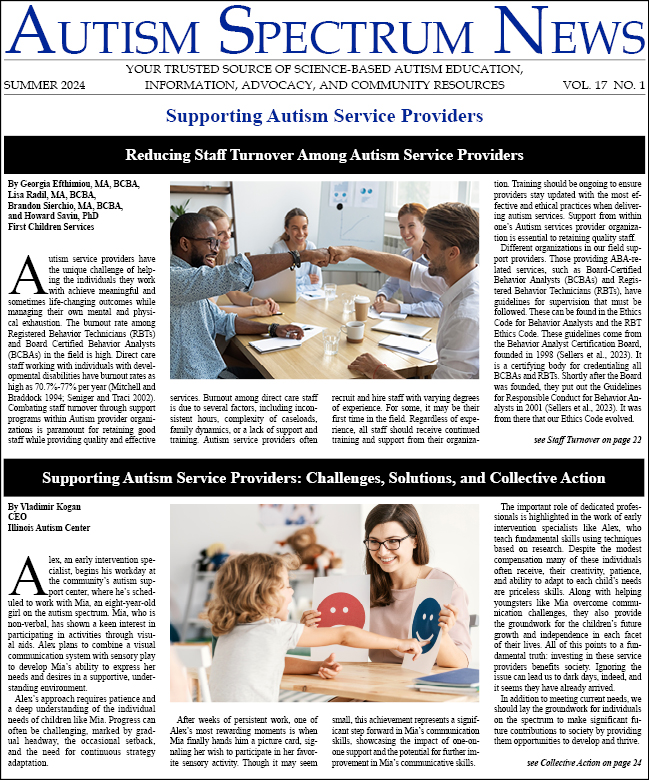-
Understanding Insurance Coverage for Autism and Co-Occurring Visual Impairment
According to Petretto et al. (2023), “…autism could currently be considered one of the most commonly reported co-existing developmental disorders in children with blindness or other severe visual impairment.” The etiology, or the biological cause of the blindness, was directly correlated with...
-
Helping Youth with Autism and Co-Occurring Low Vision and Blindness
The prevalence of autism has been increasing over the years. The CDC estimates that 1 out of every 44 children has an autism spectrum condition (CDC, 2021). It has changed from a low-incidence disability (i.e., 1 in 10,000) to a more common one. Blindness, on the other hand, is currently considered...
-
A Scaffolded Approach to Supporting Individuals with Autism in the Community
The outcomes for young adults with ASDs are well-known and well-documented. Without intervention young adults with ASD fail to reach basic young adult milestones in terms of independent living, employment, and social and romantic relationships. “Research suggests 70% of individuals with ASD will...
-
Using Summer Programming to Prepare for Post-Secondary Education
Each year 50,000 young adults on the autism spectrum turn 18 years of age (Roux et al., 2013). How can parents and educators ensure that these young people are ready for the transition to post-secondary life? A good number of these young people are academically ready and prepared for the...
-
Promoting Community Engagement and Social Connections Through Employment and Volunteering
Most parents, at some point, grapple with worry over how their child will fair. Will they be happy? Will they find meaningful connections? Will they find their passion? This is particularly true for parents of children with autism. Added to typical concerns, like “is my adult child eating their...
-
Transition Planning for the Long Haul – Life Beyond College
Parents of students on the autism spectrum and their neurotypical peers begin to think about college as they progress through high school. According to the Department of Labor, students with disabilities who earn a bachelor’s degree are employed at about the same rate as their non-disabled peers...
-
Safety in Numbers – Traveling with Students on the Autism Spectrum
Travel with students on the autism spectrum is a fun and rewarding experience provided that planning and forethought are engaged before going on a trip. Domestic local day trips differ from multi-day international excursions. However, some basic tenants pertain to the planning of each kind of trip....
-
The Ever Changing Landscape of Higher Education: An Opportunity for Students on the Spectrum
Changes in the college-aged population in the United States are among the evolving opportunities for higher functioning individuals on the autism spectrum. According to the U.S. Census, from 2015-2065 we will see about a 2% drop in the percentage of 18-24 year olds. Two percent sounds like a small...
-
Green Goods and Services: A New Niche in the Economy for Individuals on the Autism Spectrum
What is the Green Goods and Services (GGS) Industry? If you guessed it has something to do with recycling you are partially correct. Green Goods and Services is a broad category of our economy defined by the U.S. Department of Labor Bureau of Labor Statistics (BLS). “The BLS definition of green...
-
Financing Post-Secondary Education and Training
According to the National Center for Education Statistics (NCES), “the average total cost of attendance in 2011-12 for first-time, full-time students living on campus and paying in-state tuition was $21,000 at public 4-year institutions, $41,420 at private nonprofit 4-year institutions, and...





